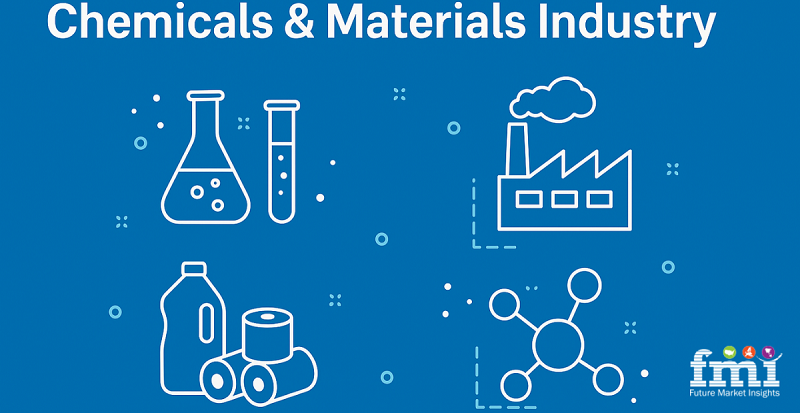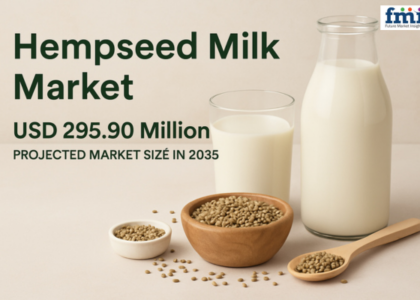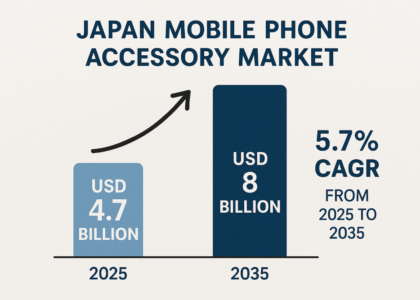The Perfluoropolyether (PFPE) market is most commonly discussed within the context of its applications in lubricants, aerospace, and electronics. However, a less examined yet rapidly growing frontier is its deployment in high-precision cooling systems, particularly in the evolving quantum computing industry. As the demand for ultra-low temperature and chemically inert lubricants grows, PFPE-based materials are uniquely positioned to meet the extreme requirements of quantum processors and high-vacuum chambers.
PFPE’s Molecular Structure: The Foundation of Its Thermal Excellence
PFPE is composed of fully fluorinated ether chains, making it resistant to oxidation, extreme temperatures, and chemical reactivity. This unique molecular architecture allows PFPE oils and greases to remain stable under pressures and temperatures where conventional synthetic lubricants fail. Quantum computers, which operate at temperatures near absolute zero, require materials that not only withstand cryogenic conditions but also remain inert in ultra-clean environments. PFPE lubricants, with their negligible vapor pressures and high thermal resistance, satisfy these strict criteria better than any other fluid.
𝐌𝐚𝐤𝐞 𝐈𝐧𝐟𝐨𝐫𝐦𝐞𝐝 𝐃𝐞𝐜𝐢𝐬𝐢𝐨𝐧𝐬 – 𝐀𝐜𝐜𝐞𝐬𝐬 𝐘𝐨𝐮𝐫 𝐒𝐚𝐦𝐩𝐥𝐞 𝐑𝐞𝐩𝐨𝐫𝐭 𝐈𝐧𝐬𝐭𝐚𝐧𝐭𝐥𝐲! https://www.futuremarketinsights.com/reports/sample/rep-gb-5647
In high-vacuum applications, especially within the semiconductor and photonics industries, PFPE lubricants maintain their consistency and performance without outgassing, which could otherwise contaminate sensitive surfaces or disrupt electron beam pathways. These attributes have quietly made PFPE the backbone of cleanroom-compatible machinery and wafer processing equipment—an aspect still underrepresented in broader market discussions.
Quantum Computing: A Game-Changing PFPE Use Case
Quantum computing remains in its nascent commercial phase, but its hardware demands are already reshaping material selection in advanced technologies. Qubits, the fundamental units of quantum computers, require cryogenic cooling systems that operate below -273°C. Any thermal or molecular instability near the qubit array could introduce noise, reducing quantum coherence times and leading to computational errors.
Major quantum labs, including those supported by IBM and D-Wave, have reportedly incorporated PFPE-based greases and oils in their dilution refrigerators. These substances help minimize frictional losses and maintain the vacuum integrity essential for accurate quantum behavior. While no major PFPE manufacturer has publicly disclosed their contracts in this field, industry insiders note a growing shift of niche PFPE products toward this application space—suggesting a new growth driver outside traditional lubricant markets.
High-Vacuum Systems in Space and Defense Technologies
Another undervalued application of PFPE is in space-borne vacuum systems and satellites. Space environments demand materials that can perform reliably without re-lubrication for years, despite exposure to radiation, vacuum, and wide thermal swings. PFPE oils and greases are frequently used in attitude control mechanisms, satellite gyroscopes, and robotic actuators aboard spacecraft.
𝐔𝐧𝐥𝐨𝐜𝐤 𝐂𝐨𝐦𝐩𝐫𝐞𝐡𝐞𝐧𝐬𝐢𝐯𝐞 𝐌𝐚𝐫𝐤𝐞𝐭 𝐈𝐧𝐬𝐢𝐠𝐡𝐭𝐬 – 𝐄𝐱𝐩𝐥𝐨𝐫𝐞 𝐭𝐡𝐞 𝐅𝐮𝐥𝐥 𝐑𝐞𝐩𝐨𝐫𝐭 𝐍𝐨𝐰: https://www.futuremarketinsights.com/reports/perfluoropolyether-market
One illustrative example is NASA’s use of PFPE lubricants in the Mars rovers’ motor assemblies. These oils performed consistently in the frigid Martian environment, where failure would have compromised billion-dollar missions. Though such applications are well known among engineers, they rarely appear in commercial PFPE market reports, which tend to emphasize automotive or semiconductor sectors instead.
Manufacturing Trends and Challenges in Specialty PFPEs
As niche applications like quantum computing and aerospace become more prevalent, the PFPE supply chain is facing new challenges. Custom synthesis of low-vapor pressure PFPEs or ultra-high-purity variants tailored for specific equipment adds complexity and cost. Manufacturers such as Solvay, Chemours, and Daikin are investing in small-batch, high-specification PFPE products to meet the emerging demand, but the lack of standardized grades across industries complicates mass production.
Additionally, regulations surrounding perfluorinated compounds continue to evolve, with environmental scrutiny increasing on long-chain PFAS. However, PFPEs—being among the least bioavailable and chemically reactive perfluorinated materials—are often excluded from broader PFAS bans. This regulatory gray area gives them a safer standing for continued use in critical industries, although it does increase pressure for transparency in formulation and lifecycle management.
The Future Outlook: From Lubricants to Essential Enablers
Despite its relatively niche size compared to traditional fluoropolymer markets, the PFPE segment is showing signs of a transition from specialty lubricants to enabling materials in advanced technological ecosystems. Emerging uses in precision medical imaging, atomic layer deposition systems, and quantum error correction hardware highlight the broader scope of PFPE’s future.
Future Market Insights project a CAGR of over 4.1% for PFPEs between 2025 and 2035, driven not by volume but by value-added customization and reliability in mission-critical systems. The shift from generic industrial uses to tailored scientific applications positions PFPE not just as a lubricant, but as a core infrastructure material for the next wave of innovation.
Polymers & Plastics: https://www.futuremarketinsights.com/industry-analysis/polymers-and-plastics
Recognizing PFPE’s Strategic Role in Tomorrow’s Technologies
While often overlooked in mainstream market analyses, PFPE’s exceptional physical and chemical properties make it indispensable in cutting-edge applications ranging from quantum computing to space exploration. The demand for stability, purity, and low reactivity has never been greater, and PFPEs are stepping in as the material of choice in environments where failure is not an option.
This shift from supporting roles to strategic enablers marks a turning point in the PFPE market narrative—one that will require industry stakeholders to broaden their lens beyond traditional lubricant applications and recognize the expanding frontiers of performance-driven chemical engineering.
Key Segment
By Form
- PFPE Oil
- PFPE Grease
By Product Type
- Linear
- Branched
By Application
- Automotive
- Aerospace
- Electronics
- Chemical
- Others
By Region
- North America
- Latin America
- Europe
- South Asia
- East Asia
- Oceania
- Middle East & Africa
Visit Our Blog Site: https://sites.google.com/view/futurechemicalblog/
About Future Market Insights (FMI)
Future Market Insights, Inc. (ESOMAR certified, recipient of the Stevie Award, and a member of the Greater New York Chamber of Commerce) offers profound insights into the driving factors that are boosting demand in the market. FMI stands as the leading global provider of market intelligence, advisory services, consulting, and events for the Packaging, Food and Beverage, Consumer Technology, Healthcare, Industrial, and Chemicals markets. With a vast team of over 400 analysts worldwide, FMI provides global, regional, and local expertise on diverse domains and industry trends across more than 110 countries.
Join us as we commemorate 10 years of delivering trusted market insights. Reflecting on a decade of achievements, we continue to lead with integrity, innovation, and expertise.
Contact Us:
Future Market Insights Inc.
Christiana Corporate, 200 Continental Drive,
Suite 401, Newark, Delaware – 19713, USA
T: +1-347-918-3531
For Sales Enquiries: sales@futuremarketinsights.com
Website: https://www.futuremarketinsights.com
LinkedIn| Twitter| Blogs | YouTube






